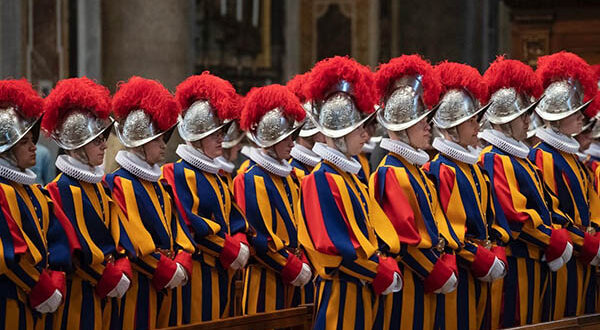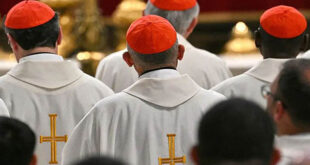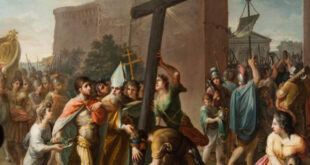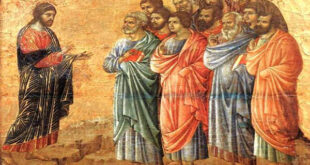When we think of Vatican City, the spiritual heart of the Catholic Church, one of the most iconic images that comes to mind is that of the Swiss Guard. With their vibrant uniforms and martial bearing, these soldiers have guarded the Pope and the Holy See for more than five centuries. But beyond their striking appearance and ceremonial role, the Swiss Guard represents a living tradition of service, faith, and sacrifice. In this article, we will explore their origins, their history filled with epic moments, and their role in the modern world, discovering why they remain a powerful symbol of loyalty and devotion to God.
A Noble Origin: From War to the Protection of the Successor of Peter
The history of the Swiss Guard begins in the 15th century, a turbulent era when monarchies and Papal States were engaged in constant conflicts. In Switzerland, then a country divided into cantons, highly disciplined and brave soldiers emerged, renowned for their skill in battle. Their fame spread quickly, and many European kings and princes hired them as mercenaries.
Pope Julius II, known as “the Warrior Pope,” had the vision of recruiting these soldiers to protect the Holy See. In 1506, the first 150 Swiss soldiers arrived in Rome, marking the official birth of the Pontifical Swiss Guard. Since then, this elite military unit has served with honor, becoming one of the oldest active military forces in the world.
An Oath of Loyalty Unto Death
What sets the Swiss Guard apart from any other military corps is the deep spiritual commitment its members undertake. They are not just soldiers but also men of faith who see their service as a vocation. Each new recruit solemnly swears to protect the Pope and the Church, “even at the cost of my own life if necessary.”
Every year on May 6th, in a moving ceremony, new guards take their oath in the Saint Damaso Courtyard of the Vatican. This date is no coincidence: it commemorates the heroic sacrifice of 147 Swiss Guards in 1527 during the Sack of Rome by the army of Emperor Charles V. In one of the most epic moments in Vatican history, these soldiers gave their lives to allow Pope Clement VII to escape safely through the Passetto di Borgo, a secret passage connecting the Vatican to Castel Sant’Angelo. Since then, absolute loyalty unto death has been the hallmark of this elite military corps.
More Than a Guard: Spiritual Formation and Military Discipline
Being a member of the Swiss Guard is not just about wearing a striking uniform and marching in ceremonies. To be accepted, a candidate must meet strict requirements:
- Be male, single, and of Swiss nationality.
- Be a practicing Catholic with an upright moral life.
- Have completed military service in Switzerland.
- Be between 19 and 30 years old and at least 1.74 meters (5’8”) tall.
- Possess great discipline and a spirit of service.
Once admitted, the guards receive specialized military training, including self-defense tactics, weapons handling, and dignitary protection. But even more important is their spiritual formation. The Swiss Guard is not just a security force but also a living testimony of the Catholic faith. Every day, the soldiers participate in Holy Mass, communal prayer, and spiritual guidance, aware that their duty is not just earthly but also a service to Christ and His Church.
The Uniform: A Symbol of Tradition and Honor
One of the most recognizable aspects of the Swiss Guard is its colorful Renaissance-style uniform, inspired by designs attributed to Michelangelo. With blue, red, and yellow stripes, this attire is a blend of history and art, although its current design was created in 1914.
Despite its historical appearance, the Swiss Guard is not merely a decorative feature of the Vatican. Beneath the colorful uniform, each guard is trained in modern security and defense tactics. Although they carry ceremonial halberds and swords, they are also equipped with firearms and advanced technology to ensure the Pope’s safety in the 21st century.
The Modern Role: Challenges in a Changing World
Today, the Swiss Guard not only protects the Pope during audiences and official events but also plays a crucial role in Vatican security. With the growing threat of terrorism and the challenges of the digital age, their mission has evolved significantly.
The guards work closely with the Vatican Gendarmerie and other international security forces to ensure the Pope’s protection. Additionally, their presence serves as a visible reminder that the Church, while spiritual, must also safeguard its leaders and faithful.
A recent case that highlighted the importance of the Swiss Guard occurred in 1981, when Pope John Paul II was the victim of an assassination attempt in St. Peter’s Square. Although the Guard could not prevent the attack, their swift response helped manage the situation and strengthen security measures for future Popes.
Anecdotes and Curiosities: The Human Side of the Swiss Guard
Despite their serious and martial image, the Swiss Guard also has a human side full of interesting stories. One of them is the tradition of the “Married Guard”: after several years of service, a member may marry and continue his duties, though he must live outside the barracks.
Another curious fact is that although the official language of the Guard is German, Swiss soldiers come from different regions and speak French, Italian, and Romansh, making the barracks a small Tower of Babel.
An Example of Loyalty and Faith for Today’s World
In a world where values of commitment and sacrifice seem to be fading, the Swiss Guard remains a living example of fidelity to the Church and Christ. Their existence reminds us that faith is not just about beliefs but also about service and dedication.
Every time we see these young men in Renaissance uniforms at the Vatican, we are not just looking at soldiers but at men who have consecrated their lives to protecting the Successor of Peter and the Church. They are a sign that, amid modernity and change, there are traditions that endure, inspiring generations to live with honor, courage, and love for God.
So next time you visit St. Peter’s Square and see a Swiss Guard at his post, remember: he is not just a sentry but a defender of the faith, a witness to the Gospel, and a model of total dedication to Christ.







The uniforms transport me to another time…